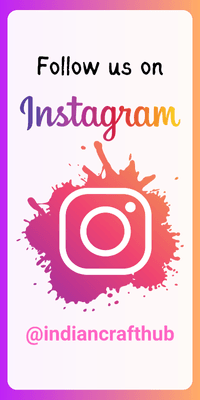Diwali, often called the “Festival of Lights,” stands as India’s most celebrated and cherished holiday, recognized by Hindus and people across many other faiths. Marking a time for family, reflection, and renewal, Diwali symbolizes light triumphing over darkness and good prevailing over evil. The word “Diwali” comes from Sanskrit, meaning “row of lights.” This holiday is celebrated worldwide, illuminating hearts and homes with joy, diyas (clay lamps), candles, and firecrackers.
In Hinduism, Jainism, Sikhism, and even Buddhism, Diwali holds unique and important meanings. For many, it celebrates the return of Lord Rama to Ayodhya after 14 years of exile, while others observe the festival for its unique traditions. This five-day celebration, beginning on Dhanteras, conveys unity, joy, and spiritual enlightenment. Curious to know when to do Lakshmi Pooja on Diwali? This vital part of the festival takes place on the third day, bringing blessings of prosperity into every household. Let’s explore Diwali’s traditions, rituals, and rich cultural background.
Table of Contents
The Origins and Symbolism of Diwali
Diwali, rooted in ancient Sanskrit, means “a row of lights,” symbolizing the victory of light over darkness. In Hindu culture, it marks the return of Lord Rama, who, alongside his wife Sita and brother Lakshmana, returns to Ayodhya after defeating the demon king Ravana. Welcomed back by a city illuminated with clay lamps, this sight turned Ayodhya into a glowing spectacle, inspiring the tradition of lighting diyas during Diwali.
Diwali also carries significant meaning across various religions. For Jains, it marks the nirvana or spiritual enlightenment of Lord Mahavira. Sikhs celebrate Diwali to honor the release of their Sixth Guru, Guru Hargobind Ji, from imprisonment. Even among Buddhists, Diwali holds a celebratory place, connecting communities and faiths through a message of unity.
The Five-Day Diwali Celebration
Each day of Diwali has a special theme and meaning, making this festival a five-day journey of devotion, celebration, and renewal:
- Day 1 – Dhanteras: Diwali begins with Dhanteras, a day dedicated to wealth and prosperity. People buy gold, silver, or utensils, believing these items invite luck and abundance. This day marks the beginning of festivities, and families clean their homes and shop for decorations.
- Day 2 – Naraka Chaturdashi (Chhoti Diwali): On this day, people celebrate the victory of Lord Krishna over the demon Narakasura. Known as “Chhoti Diwali,” this day is for cleansing and preparation. People clean their homes thoroughly and decorate with rangolis, while some regions observe this day with special pujas and traditions.
- Day 3 – Lakshmi Pooja (Main Diwali Day): Lakshmi Pooja on Diwali is the festival’s main day, honoring the goddess of wealth, Lakshmi, along with Lord Ganesha, the remover of obstacles. Wondering when to do Lakshmi Pooja on Diwali? The evening is ideal, when families gather to place clay lamps, perform prayers, and seek blessings for prosperity.
- Day 4 – Govardhan Puja: This day celebrates the worship of Lord Krishna, who lifted the Govardhan Mountain to protect his village from heavy rains. Govardhan Puja is an expression of gratitude toward nature and a call for protection from natural adversities.
- Day 5 – Bhai Dooj: The festival closes with Bhai Dooj, a day celebrating the bond between brothers and sisters. Sisters pray for the well-being of their brothers, applying a sacred tika on their foreheads, and brothers, in turn, give gifts, symbolizing mutual care and protection.
Diwali Traditions Across Regions
Diwali brings together various cultural practices and rituals that showcase India’s diversity. From North to South, East to West, Diwali customs differ, yet the essence remains the same: celebrating light, prosperity, and togetherness.
- Lighting of Diyas: Across India, lighting diyas is a cherished tradition, symbolizing the power of inner light to dispel darkness and ignorance. Homes glow with rows of these lamps, creating a serene and sacred atmosphere.
- Bursting Firecrackers: Firecrackers are an age-old Diwali tradition, believed to drive away evil spirits and fill the air with joy. This custom, though modernized, remains a prominent part of Diwali, with cities lighting up with colorful displays.
- Decorating with Rangoli: Rangoli designs, made from colored powders, flowers, and even rice, grace the entrances of homes. These designs welcome guests and signify joy, prosperity, and good fortune.
- Sharing Gifts and Sweets: Diwali is a time for sharing and spreading joy. Exchanging gifts and sweets strengthens bonds, with delicious treats like ladoos, barfis, and kaju katlis adding sweetness to the celebrations.
Lakshmi Pooja on Diwali: The Heart of the Celebration
The third day of Diwali, dedicated to Goddess Lakshmi, represents the festival’s peak. During Lakshmi Pooja, families pray to the goddess for wealth, happiness, and prosperity. Performing Lakshmi Pooja on Diwali is a beloved ritual, as Goddess Lakshmi symbolizes fortune and abundance.
When to do Lakshmi Pooja on Diwali? Families typically perform the pooja in the evening, lighting lamps and placing them around their homes to invite the goddess’s blessings. Diyas are arranged in patterns, filling the surroundings with warmth and spiritual light. This pooja is often accompanied by offerings like sweets, flowers, and coins, expressing gratitude and respect.

Diwali Feasts and Traditional Sweets
Diwali is incomplete without a feast! Every family prepares an array of dishes, both savory and sweet, to share with friends and neighbors.
- Traditional Sweets: From gulab jamuns to jalebis and laddus, sweets are a major part of Diwali feasting. Preparing these treats at home is a long-standing tradition, bringing families together in the kitchen.
- Special Snacks: Diwali feasts include snacks like samosas, pakoras, and namkeen. These savory delights, paired with sweets, create a balanced festive spread.
Diwali’s Reach: A Global Celebration
While Diwali is a Hindu festival, its appeal transcends religious boundaries. Diwali is celebrated in countries like Nepal, Sri Lanka, and Mauritius and among the Hindu diaspora worldwide. From New York to London, Diwali events bring communities together with music, dance, and cultural displays. This global recognition of Diwali highlights its universal values of light, kindness, and unity.
Diwali celebrations around the world may include unique twists, but the core elements—light, family, and positivity—remain the same. The festival serves as a reminder that light can overcome darkness no matter where we are.
The Eco-Friendly Diwali Movement
As awareness of environmental conservation grows, many people are embracing eco-friendly Diwali practices. Some skip firecrackers to avoid air pollution, opting instead for traditional diya lighting and natural decorations. Eco-friendly Diwali is a growing trend, balancing tradition with respect for nature.
- Eco-Friendly Decorations: Using organic materials like flowers, leaves, and biodegradable items for decor.
- Green Rangoli: Natural colors derived from turmeric, flowers, and rice create vibrant yet eco-friendly rangoli patterns.
- Avoiding Firecrackers: For a quieter and cleaner Diwali, many choose to celebrate without fireworks, keeping the air clear and reducing noise pollution.
Conclusion: Embracing Diwali’s Message of Light and Unity
Diwali brings a timeless message of hope, prosperity, and unity. It reminds us to cherish our loved ones, embrace positive values, and walk toward the light of inner wisdom. Celebrated across various faiths and countries, Diwali continues to inspire people to reflect on life’s blessings and nurture bonds with friends and family.
By understanding when to do Lakshmi Pooja on Diwali and by honoring these rituals, people worldwide connect with Diwali’s spirit of joy and renewal. Embracing both tradition and modern values, Diwali stands as a festival that truly brightens our lives.
FAQs on the Diwali
What is Diwali?
Diwali, also known as the “Festival of Lights,” is one of the most important Hindu festivals celebrated across India and other parts of the world. It symbolizes the victory of light over darkness and good over evil.
When is Diwali celebrated each year?
Diwali typically falls between October and November, based on the Hindu lunar calendar. The exact date varies annually.
Why is Diwali celebrated?
Diwali is celebrated for various reasons. In Hinduism, it marks the return of Lord Rama to Ayodhya after defeating the demon Ravana. It’s also observed by Jains as the day of Lord Mahavira’s nirvana, Sikhs commemorate the release of Guru Hargobind Ji, and Buddhists in India celebrate it as well.
What are the five days of Diwali?
Day 1 – Dhanteras: A day for purchasing gold, silver, and utensils for luck.
Day 2 – Naraka Chaturdashi (Chhoti Diwali): Cleansing and preparation day.
Day 3 – Lakshmi Pooja (Main Diwali Day): Worship of Goddess Lakshmi for prosperity.
Day 4 – Govardhan Puja: Honoring Lord Krishna’s protection of his village.
Day 5 – Bhai Dooj: Celebrating the bond between brothers and sisters.
When to do Lakshmi Pooja on Diwali?
Lakshmi Pooja is performed in the evening on the main Diwali day. Families perform this pooja to seek blessings from Goddess Lakshmi, the deity of wealth and prosperity.
What rituals are commonly observed during Diwali?
Common rituals include lighting diyas (clay lamps), decorating with rangoli designs, bursting firecrackers, and sharing sweets and gifts with family and friends.
How is Diwali celebrated around the world?
Diwali is celebrated globally in countries with significant Indian populations, such as Nepal, Sri Lanka, and Mauritius, and across the Hindu diaspora in countries like the United States, United Kingdom, and Canada. Celebrations often include lighting up public spaces, hosting cultural events, and sharing festive food.
What are some eco-friendly Diwali practices?
Eco-friendly Diwali practices include using natural decorations, opting for diyas instead of electric lights, avoiding firecrackers, and using biodegradable materials for rangoli. Many people choose to celebrate with a reduced environmental impact.
Is Diwali only celebrated by Hindus?
No, Diwali is also celebrated by Jains, Sikhs, and some Buddhists, each with their own historical and cultural significance tied to the festival.
What types of food are prepared for Diwali?
Diwali feasts typically include a variety of sweets like ladoos, barfis, and jalebis, along with savory snacks like samosas and pakoras. Families prepare these dishes to share with guests and celebrate the festive spirit.
Why are diyas lit during Diwali?
Diyas are lit to symbolize the triumph of light over darkness. They’re believed to bring positivity and blessings into homes, creating a peaceful and joyful ambiance.
What is the significance of firecrackers during Diwali?
Traditionally, firecrackers were believed to drive away evil spirits. Today, they are a common celebration element, though some people choose eco-friendly ways to celebrate instead to reduce pollution.
How can I wish someone a happy Diwali?
You can wish someone a happy Diwali by saying “Happy Diwali” or “Shubh Deepavali!” Sharing well wishes for health, wealth, and happiness is common during this time.
How can I make my Diwali celebrations more environmentally friendly?
Consider using eco-friendly decorations, skipping firecrackers, opting for natural colors in rangoli, and sharing food with minimal waste. Many families choose biodegradable materials and natural lights to celebrate responsibly.

🌟 Join Our Crafting Community! 🌟
If you’re passionate about Indian crafts, artisanal craftsmanship, and the beauty of traditional techniques, don’t miss out! Subscribe to our YouTube channel for inspiring craft tutorials, expert insights, and behind-the-scenes looks at the incredible world of Indian artisans. Be part of our journey to celebrate and preserve the rich heritage of Indian crafts. Hit that subscribe button and turn on notifications so you never miss an update!
🎨 Let’s craft the future together with sustainable and vibrant creations! ✂️
Indian Crafts, Artisanal Craftsmanship, Handmade Indian Products, Heritage Crafts, Traditional Art, Skilled Artisans, Cultural Crafts, DIY Indian Art, Indian Artistry.













